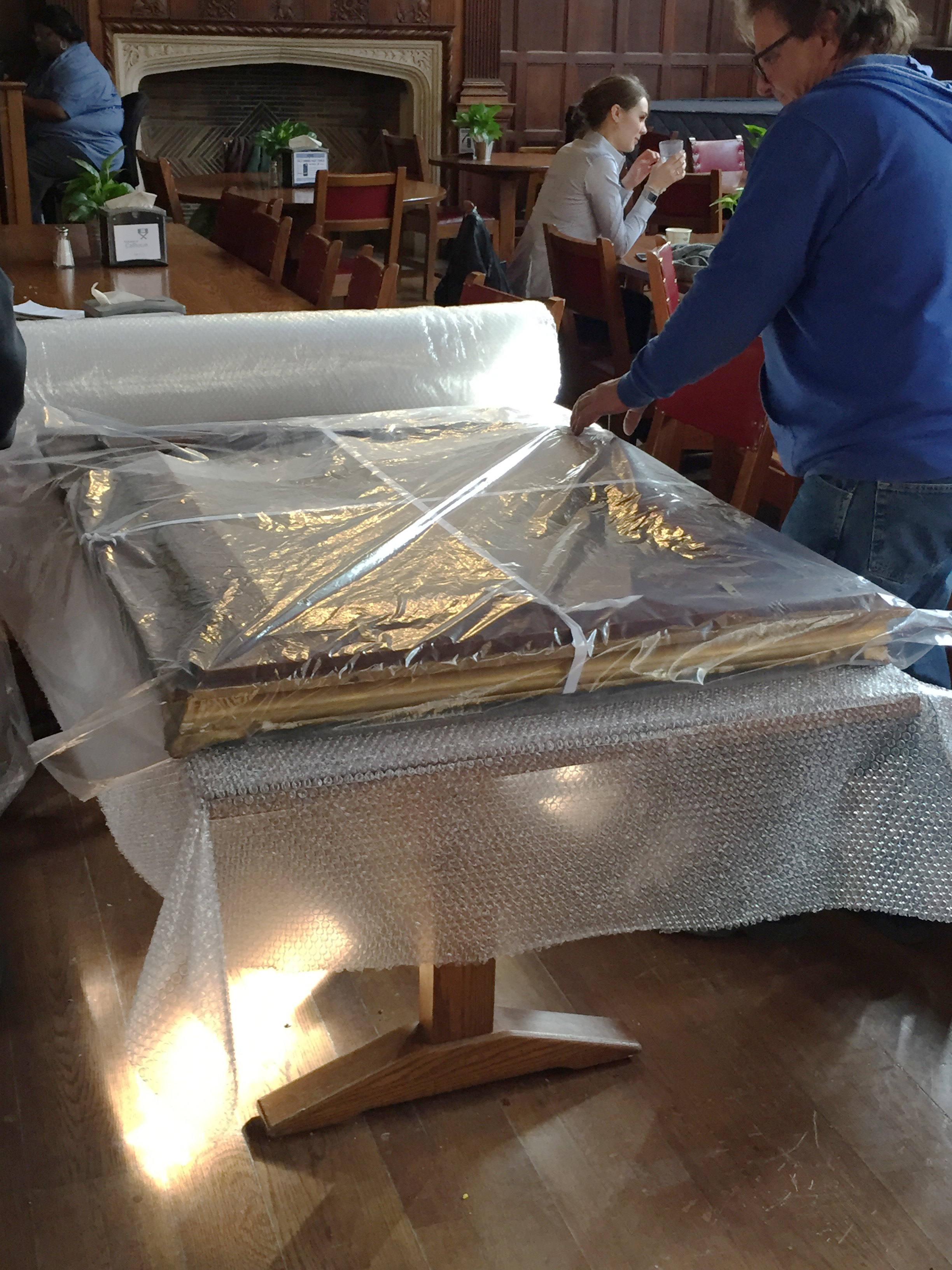
The students eating breakfast in the Calhoun College dining hall on Friday morning were not gathered there to witness the removal of a widely loathed work of 19th-century portraiture. They were focused more on oatmeal and coffee than on the vexed history of race at Yale.
But at about 10:50 a.m., Calhoun Master Julia Adams entered the dining hall, trailed by two men with a ladder and some bubble wrap, art technicians trained to haul priceless paintings from place to place. They had come to take down the glowering portrait of outspoken slavery advocate John C. Calhoun that had hung on the back wall since the 1930s.
The two technicians — dispatched by the Yale University Art Gallery to carry out the painting’s removal — set up a ladder, and carefully lowered the portrait from its position above the dining hall fireplace. There was scattered applause from the nearly two dozen students finishing breakfast. A photograph of the painting’s removal was promptly posted to the popular Facebook group Overheard at Yale. It all happened in less than 10 minutes. The speed with which the painting came down, Adams said, took her by surprise.
The two men laid the portrait facedown on one of the long tables at the front of the dining hall. They looped white tape around the canvas, then covered it with a couple of layers of plastic and bubble wrap. The painting suddenly looked more like a sizable delivery of cold cuts than one of the focal points of a polarizing debate about racial justice on campus. It was, at least for a moment, just an object — a not-particularly imposing, not-particularly remarkable hunk of paint and wood and metal.
One of the lessons of the racial unrest that has rocked campus over the last four months lies in precisely this disconnect — the chasm between the seeming banality of names and objects and the intense trauma they elicit. The painting in the dining hall, as well as two other portraits of Calhoun that hung in the master’s house, did not come down simply because, as many students complained, the paintings were visually unappealing. The troubling power of those portraits lay in what their very presence seemed to signify: a long-standing disregard for the visceral discomfort the images provoked in some corners of the college community.
At dinner that night, a handful of students pointed to the blank space on the wall, noticing for the first time that John C. Calhoun would scowl no more. They were pleased, for the most part. One said the hall had gained an atmosphere of comfort and renewal, that the removal of the painting felt more like an act of creation than the tearing down of an ugly symbol.
The inside of the dining hall was still dark and gloomy. Outside it was still bitterly cold.
But above the dining hall hearth, a portrait-sized rectangle of decorative paneling now lies empty. For many in the college, the profound silence of that blank wooden backdrop will produce its own kind of warmth and light.







